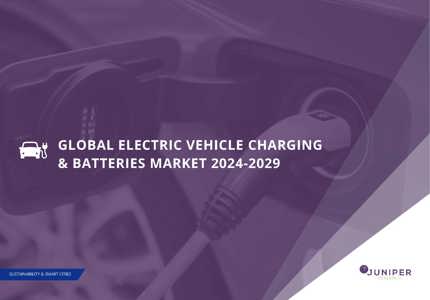UK Election Results: What Do They Mean for Sustainability & Green Energy?
Labour's election victory comes at a pivotal time for the global sustainability sector. A newfound urgency about the climate crisis, as well as rising energy costs, means that governments, businesses, and individual are looking to reduce their emissions output and move towards a 'net zero' society.
This new government, then, is under pressure to place sustainability and clean energy at the heart of its policymaking; not just when launching green initiatives, but in everything it aims to achieve.
The Labour Party identified several key pledges surrounding clean energy and sustainability within its manifesto. These included the following:
- Working with the private sector to double onshore wind, triple solar power, and quadruple offshore wind by 2030, as well as investing in carbon capture and storage, hydrogen and marine energy, and long-term energy storage
- Ensuring that new policymaking reflects commitments to reach net zero and carbon budgets
- Supporting the introduction of a carbon border adjustment mechanism
- Phase out ICE vehicles by 2030, restoring an abandoned pledge by the previous government
These pledges contain a lot of potential improvements to how the UK tackles sustainability and the larger climate crisis. However, these are big commitments, and a lot will need to happen to achieve them.
To this end, we've identified several recommendations that the new government could integrate into its new strategy.
Improving EV Charging Infrastructure
At present, there is a lack of electric vehicle charging infrastructure to support the increasing number of electric vehicles. In addition, the current charging network is highly fragmented, hindering EV adoption amongst consumers.
In order to avoid this confusion, the government must improve efforts to standardise elements such as charging connectors, and standardising access to chargers via contactless payments or aggregated apps. Reducing the level of fragmentation throughout the EV charging landscape will improve the charging infrastructure and therefore encourage EV adoption; reducing the need for ICE vehicles.
Supporting Renewable Energy Technologies
At present, the UK is off track in regards to meeting net zero, therefore it is vital for the Labour government to begin acting on this as soon as possible. One of the best ways to achieve this is through the use of renewable energy technologies, such as wind and solar power. The Labour government is taking steps to increase windfarm construction by announcing that it is lifting the de facto ban that is currently in place. This is a step in the right direction for increasing renewable energy technology, however, there are still a number of hurdles that it will need to overcome, such as removing the number of planning obstacles involved in new projects, and ensuring that the grid is set up to receive new supplies.
One action that could be taken by the new government in improving energy sources is increasing the requirement for carbon emission reduction in houses. At present, it is only stated that energy-saving measures need to be included in new builds, however, some houses are still being built with gas boilers and without solar panels. Alongside this, retrofitting older houses with improved insulation would also significantly decrease energy use; reducing pressure on the grid.
Encouraging MaaS to Reduce the Public's Reliance on Private Vehicles
At present, there are major infrastructure and public transport issues holding MaaS (Mobility-as-a-Service) back from its full potential especially in rural areas. In the UK, this is a mixture between having fragmentation of public transport networks that can be connected combined with limited regulations in place which will be beneficial for MaaS. Overregulation can hinder development and slow the market, while under-regulation can limit the wider adoption of new concepts and technologies, therefore, it is important for the government to get the correct level of regulation.
Critically, the new UK government must consider the optimal way of improving the current sustainability efforts through investment into renewable energy technologies and electric vehicle infrastructure, in order to support future regulations and initiatives. Given there needs to be reductions in the production of fossil fuel-based energy to reach net zero, the new government must act now, given the slow rate of progress in the energy market.
Latest research, whitepapers & press releases
-
 ReportDecember 2025
ReportDecember 2025AI Agents for Customer Experience Platforms Market: 2025-2030
Our comprehensive AI Agents for Customer Experience Platforms research suite comprises detailed assessment of a market that is set to disrupt mobile communications. It provides stakeholders with insight into the key opportunities within the AI agents for customer experience platforms market over the next two years.
VIEW -
 ReportDecember 2025Fintech & Payments
ReportDecember 2025Fintech & PaymentseCommerce Fraud Prevention Market: 2025-2030
Our eCommerce Fraud Prevention research suite provides a detailed and insightful analysis of this evolving market; enabling stakeholders from financial institutions, law enforcement agencies, regulatory bodies and technology vendors to understand future growth, key trends, and the competitive environment.
VIEW -
 ReportNovember 2025Telecoms & Connectivity
ReportNovember 2025Telecoms & ConnectivityeSIMs & iSIMs Market: 2025-2030
Juniper Research’s eSIMs and iSIMs research suite offers insightful analysis of a market set to experience significant growth in the next five years. The research suite provides mobile network operators (MNOs), original equipment manufacturers (OEMs), and eSIM management and platforms vendors with intelligence on how to capitalise on the market growth, and guidance on how eSIM-only devices and sensors, SGP.42, in-factory provisioning, and iSIMs will change the competitive landscape.
VIEW -
 ReportNovember 2025Fintech & Payments
ReportNovember 2025Fintech & PaymentsModern Card Issuing Platforms Market: 2025-2030
Our Modern Card Issuing Platforms Market research suite provides a detailed and insightful analysis of this evolving market; enabling stakeholders from banks, financial institutions, fintech companies, and technology vendors to understand future growth, key trends, and the competitive environment.
VIEW -
 ReportNovember 2025Fintech & Payments
ReportNovember 2025Fintech & PaymentsDigital Wallets Market: 2025-2030
Our digital wallets research suite provides detailed analysis of this rapidly changing market; allowing digital wallet providers to gain an understanding of key payment trends and challenges, potential growth opportunities, and the competitive environment.
VIEW -
 ReportOctober 2025Fintech & Payments
ReportOctober 2025Fintech & PaymentsDigital Identity Market: 2025-2030
Juniper Research’s Digital Identity research suite provides a comprehensive and insightful analysis of this market; enabling stakeholders, including digital identity platform providers, digital identity verification providers, government agencies, banks, and many others, to understand future growth, key trends, and the competitive environment.
VIEW
-
 WhitepaperDecember 2025Telecoms & Connectivity
WhitepaperDecember 2025Telecoms & ConnectivityHuman + AI: Drivers of Customer Experience AI Agents in 2026
Our complimentary whitepaper, Human + AI: Drivers of Customer Experience AI Agents in 2026, examines the key drivers of the AI agents for customer experience platforms market in 2025.
VIEW -
 WhitepaperDecember 2025Fintech & Payments
WhitepaperDecember 2025Fintech & PaymentsBeyond Chargebacks: The True Cost of Fraud for Digital Commerce
Our complimentary whitepaper, Beyond Chargebacks: The True Cost of Fraud for Digital Commerce, examines the state of the eCommerce fraud prevention market; considering the impact of evolving digital fraud strategies, including key trends such as identity theft, account takeovers, chargebacks, policy abuse and friendly fraud.
VIEW -
 WhitepaperNovember 2025Telecoms & Connectivity
WhitepaperNovember 2025Telecoms & ConnectivityeSIM-only Devices: The Impact on Operators, Consumers, and IoT
Our complimentary whitepaper, eSIM-only Devices: The Impact on Operators, Consumers, and IoT, explores the challenges and opportunities for the three segments, with a particular focus on eSIM-only smartphones and SGP.42.
VIEW -
 WhitepaperNovember 2025Fintech & Payments
WhitepaperNovember 2025Fintech & PaymentsUnlocking the Next Stage of Growth for Modern Card Issuing Platforms
This free whitepaper analyses key trends shaping the modern card issuing space, and the ways in which modern card issuing platforms can capture growth.
VIEW -
 WhitepaperNovember 2025Fintech & Payments
WhitepaperNovember 2025Fintech & PaymentsTop 10 Fintech & Payments Trends 2026
Fintech is evolving fast. From stablecoins to agentic AI, our annual guide reveals the shifts redefining payments, digital identity, and the future of money in 2026. Download your copy today.
VIEW -
 WhitepaperNovember 2025Fintech & Payments
WhitepaperNovember 2025Fintech & PaymentsDigital Wallets: Empowering Financial Inclusivity
Our complimentary whitepaper, Digital Wallets: Empowering Financial Inclusivity, examines the state of the digital wallets market; considering the impact of digital wallets on different geographies, how they are shaping the modern payments landscape through lower transaction fees and promoting financial inclusivity for underbanked populations, and how they are competing with established payment methods.
VIEW
-
Telecoms & Connectivity
Travel eSIM Margins Under Pressure as Revenue per Gigabyte Falls 10% Globally in Two Years
December 2025 -
Telecoms & Connectivity
AI Agents to Power 1,000% More Customer Interactions for Enterprises Globally by 2027
December 2025 -
IoT & Emerging Technology
Global D2C Revenue Set for $370 Million Surge, But Satellite Operators Should Not Chase Full MNO Status
December 2025 -
Fintech & Payments
Digital Goods Fraud to Cost eCommerce Merchants $27 Billion Globally by 2030 as AI Tools Accelerate Attacks
December 2025 -
Fintech & Payments
AML Adoption to Hit 3.8 Million Businesses Globally by 2030, With Europe at the Forefront
November 2025 -
Telecoms & Connectivity
eSIM Connections to Grow 300% Globally in Next 5 Years, as China Presents Instant Opportunities
November 2025























